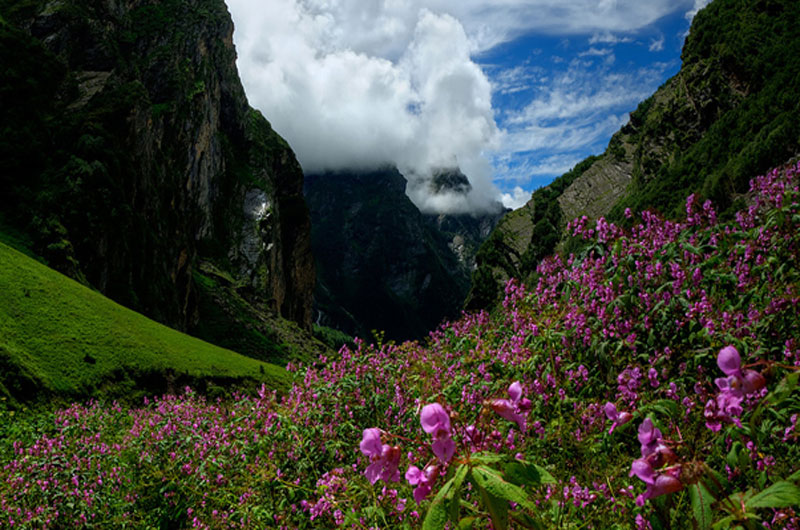
Nanda Devi Biosphere Reserve: Sacred Peak and Sanctuary of Biodiversity – A World Heritage Site
Nanda Devi Biosphere Reserve, located in the state of Uttarakhand, India, is a majestic mountainous region renowned for its towering peaks, diverse ecosystems, and cultural significance. Inscribed as a UNESCO World Heritage Site in 1988, this biosphere reserve encompasses the Nanda Devi National Park and its surrounding protected areas. Named after Nanda Devi, the second highest mountain in India, this site is celebrated for its natural beauty, unique biodiversity, and spiritual importance.
Historical Background
- Cultural and Spiritual Significance
- Revered as the abode of the goddess Nanda Devi in Hindu mythology, considered a sacred site by local communities.
- Traditional practices and rituals associated with the mountain reflect its cultural importance.
- Conservation Efforts
- Established as a biosphere reserve in 1982 to protect its fragile ecosystems and biodiversity.
- Recognized as a UNESCO World Heritage Site for its exceptional natural beauty and ecological significance.
Ecological Marvel
- Diverse Ecosystems
- Encompasses a range of altitudinal zones, from subtropical forests to alpine meadows and glaciers.
- Supports a rich variety of flora and fauna adapted to high-altitude environments.
- Flora and Fauna
- Home to rare and endemic species such as Himalayan musk deer, snow leopard, blue sheep, and various bird species.
- Rich floral diversity includes alpine flowers, medicinal plants, and rare orchids.
Specialty of Nanda Devi Biosphere Reserve
- High Altitude Wilderness
- Features the Nanda Devi Sanctuary, a glacial basin surrounded by peaks over 6,000 meters high.
- Represents an unspoiled wilderness and biodiversity hotspot in the Himalayan region.
- Cultural Heritage
- Traditional knowledge and practices of local communities regarding natural resource management and conservation.
- Spiritual significance and rituals associated with the annual Nanda Devi Raj Jat pilgrimage.
Tourism Aspects
- Visitor Experience
- Restricted access to maintain ecological integrity and minimize human impact.
- Trekking routes offer scenic vistas of snow-capped peaks, glacial lakes, and pristine landscapes.
- Wildlife safaris and birdwatching opportunities to observe Himalayan wildlife in their natural habitat.
- Accessibility
- Entry permits and guided tours required to visit the biosphere reserve, ensuring sustainable tourism practices.
- Base camps and eco-lodges provide accommodation options for trekkers and nature enthusiasts.
- Best Time to Visit
- Summer months (May to October) offer favorable weather for trekking and wildlife viewing.
- Winter months (November to April) are characterized by heavy snowfall and restricted access due to harsh conditions.
Impact on Locality
- Economic Benefits
- Tourism contributes to local economy through employment in hospitality, guiding services, and handicrafts.
- Promotes eco-tourism and sustainable development practices among local communities.
- Cultural Influence
- Enhances awareness and appreciation of Himalayan biodiversity and traditional knowledge systems.
- Fosters community involvement in conservation efforts and preservation of cultural heritage.
Preservation and Challenges
- Conservation Measures
- Managed by the Uttarakhand Forest Department and supported by conservation organizations.
- Strict regulations on trekking routes, waste management, and visitor behavior to protect fragile ecosystems.
- Challenges
- Climate change impacts, including glacial retreat and altered precipitation patterns.
- Balancing tourism with conservation needs to ensure long-term protection of biodiversity and cultural values.
Conclusion
The Nanda Devi Biosphere Reserve stands as a sanctuary of natural beauty, biodiversity, and cultural heritage in the Himalayas. As a UNESCO World Heritage Site, it offers a glimpse into India’s rich ecological tapestry and spiritual traditions associated with sacred mountains. The reserve’s pristine landscapes, diverse ecosystems, and strict conservation measures ensure its preservation for future generations, providing an invaluable opportunity to explore and appreciate the wonders of the natural world amidst the grandeur of the Himalayan peaks.
